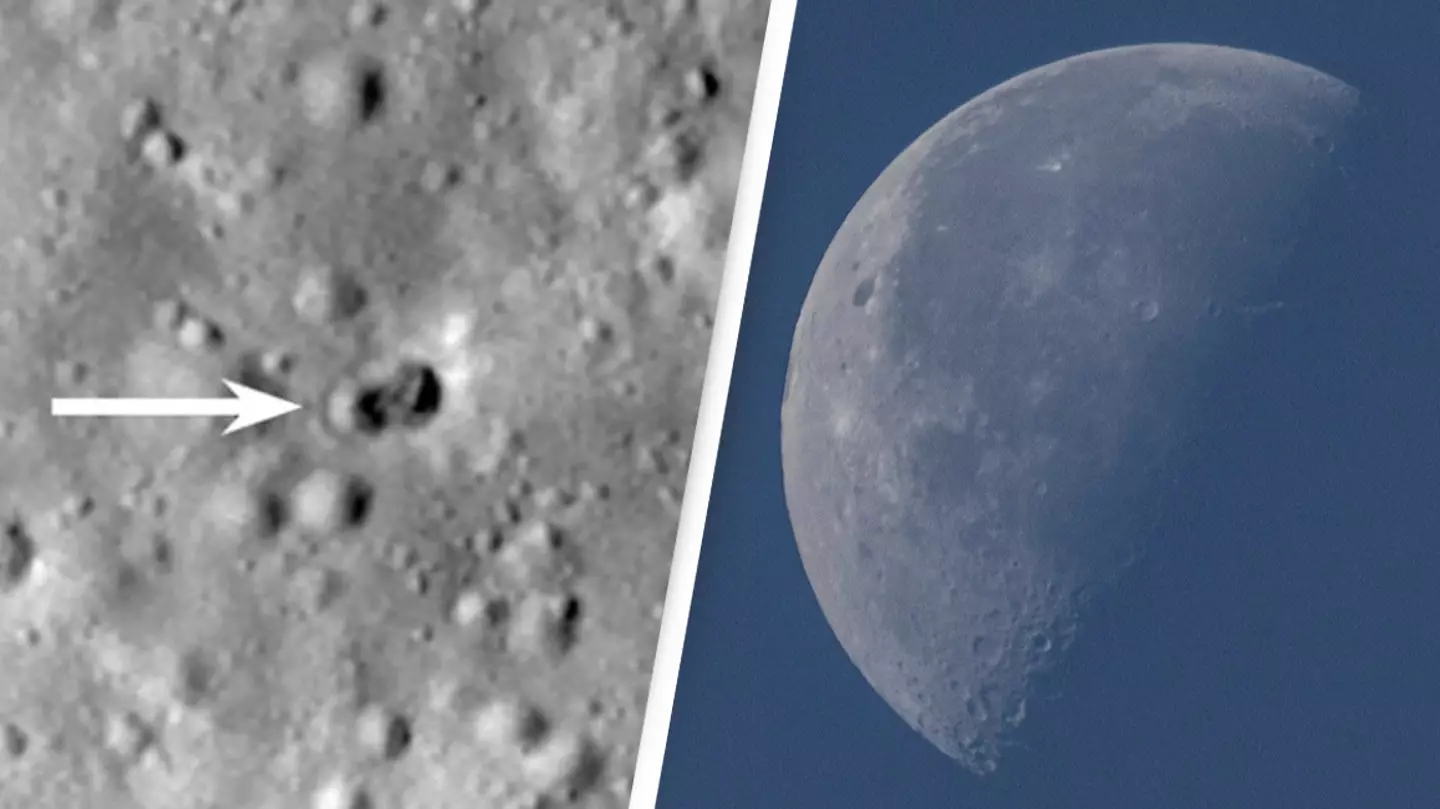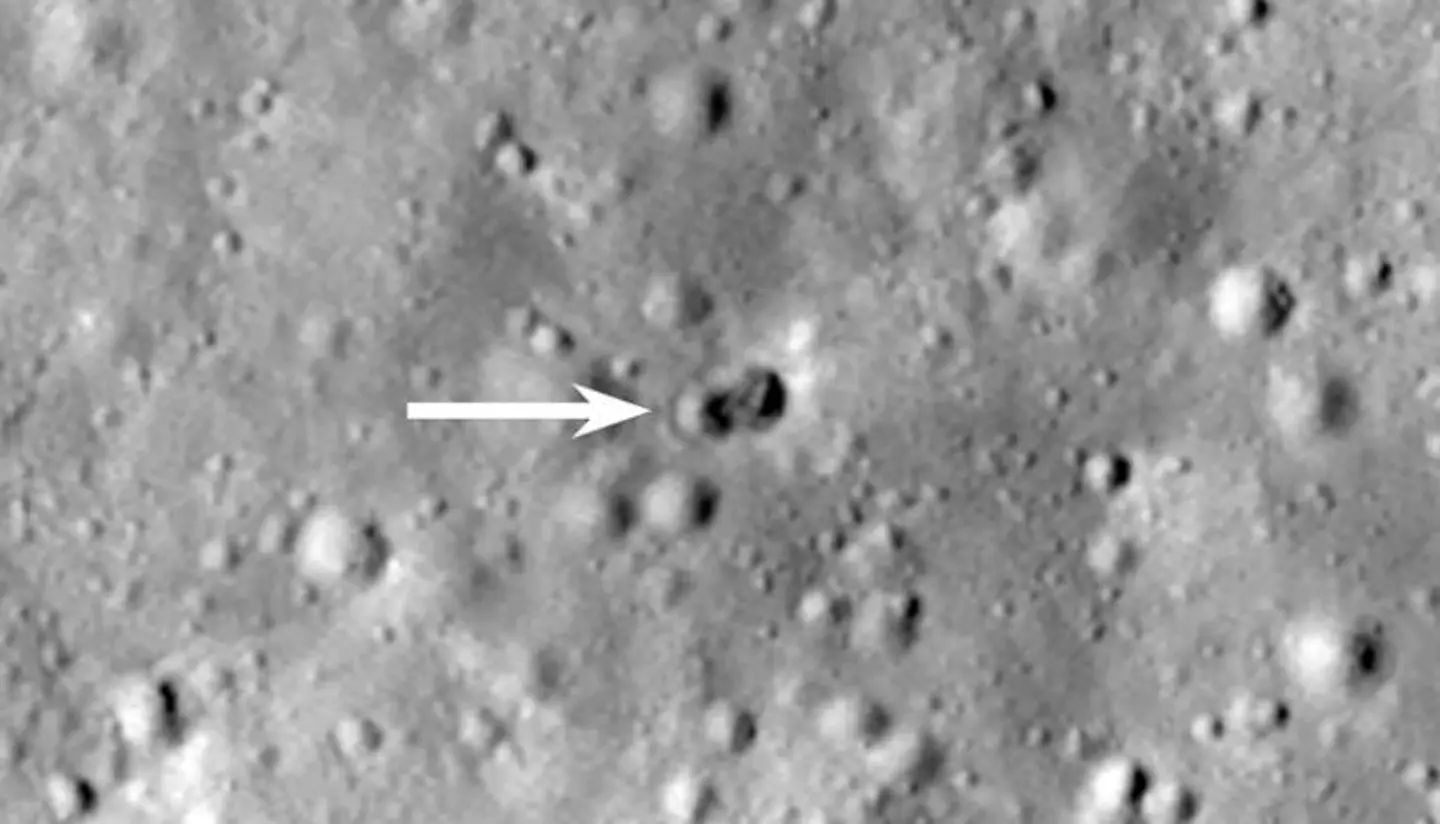
A large double crater has been spotted on the moon after a mysterious rocket cam crashing down onto the rock.
NASA scientists are said to be baffled by the whole thing and can't get their head round who was behind the launch or why it left a double crater.
I mean, if you don't believe in aliens now then you never will.
Advert
Mark Robinson, Principal Investigator of the LRO Camera team, was unable to draw a solid conclusion about the rocket's origins.
He wrote: "Astronomers discovered a rocket body heading towards a lunar collision late last year.
"Through a series of observations, they predicted the time of impact and its location (to within 100 kilometers).

"The identity of the rocket body remains unclear. Surprisingly the crater is actually two craters, an eastern crater (18 m diameter) superimposed on a western crater (16 m diameter)."
Advert
He added: "The double crater was unexpected and may indicate that the rocket body had large masses at each end.
"Typically a spent rocket has mass concentrated at the motor end; the rest of the rocket stage mainly consists of an empty fuel tank.
"Since the origin of the rocket body remains uncertain, the double nature of the crater may help to indicate its identity.
"No other rocket body impacts on the Moon created double craters.
Advert
"The four Apollo SIV-B craters were somewhat irregular in outline (Apollos 13, 14, 15, 17) and were substantially larger (>35 meters in diameter) than each of the double craters.
"The maximum width (29 meters) of the double crater of the mystery rocket body was near that of the S-IVBs."
Robinson also admitted: "I am in no way an expert on what happens in high-speed impacts like this, except to know that they can."

However, many scientists reckon that the rocket body was part of the Long March 3 booster that launched China's Chang'e 5T1 mission around the moon in October 2014.
Advert
Despite China denying the claims, Bill Gray, an independent astronomer who created software which tracks objects in space, has said: "I'm 99.9 percent sure it's the China 5-T1."
Some have also been bold enough to suggest it was one of Elon Musk's SpaceX rockets from the DISCOVR mission.
Although, it was soon clear from a scientific standpoint that this is completely impossible, as reported in Forbes.
Anyway, I think Elon's too busy building robots at the moment.
Advert
If you have a story you want to tell, send it to UNILAD via [email protected]
Topics: Space